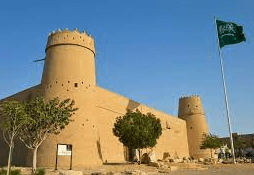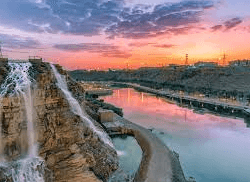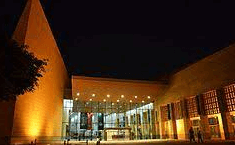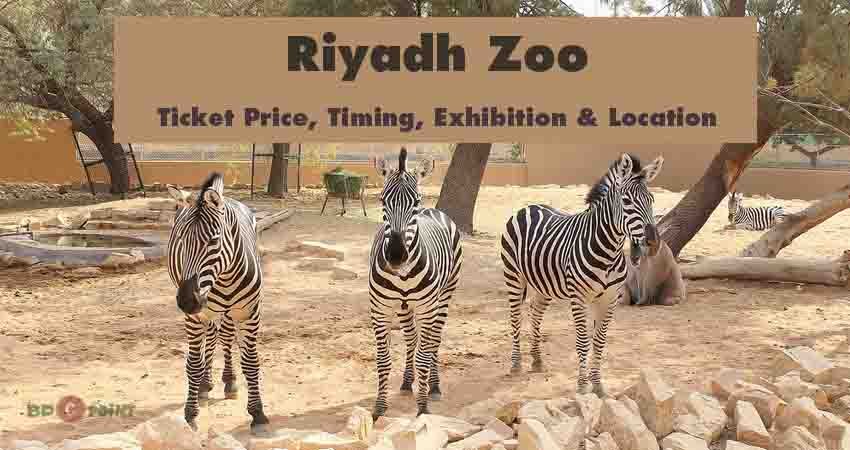Finding Tourist Places in Riyadh? Riyadh is a city that bridges the past and the future, a place where history meets innovation.
With a blend of ancient traditions and modern wonders, it welcomes travelers from around the world to explore its diverse attractions.
Whether you’re drawn to the timeless charm of Al-Masmak Fortress, the stunning architecture of the Kingdom Centre Tower, or the serene beauty of Wadi Namar Waterfall, Riyadh has a wealth of experiences to offer.
Riyadh Tourist Places
Riyadh, the capital of Saudi Arabia, is a city of contrasts, seamlessly blending its rich history with the dynamic spirit of modernity.
For travelers seeking to uncover the heart of the Arabian Peninsula, Riyadh offers a treasure trove of tourist attractions.

Whether you’re interested in historical sites, architectural marvels, or natural wonders, Riyadh has something to captivate every visitor.
Join us on a journey through some of the best Tourist Places in Riyadh that this remarkable city has to offer.
Best Tourist Places in Riyadh, Saudi Arabia
Riyadh, the vibrant capital city of Saudi Arabia, boasts a rich tapestry of tourist places that offer a glimpse into the nation’s culture, history, and natural beauty.
From modern marvels to historical sites, Riyadh has something for every traveler to explore. Here’s a brief overview of the top Tourist Places in Riyadh:
Masmak Fort
Masmak Fort, located in Riyadh, Saudi Arabia, is a historical gem built in 1865. This mudbrick fortress remains well-preserved today, showcasing timeless architecture with thick walls and sturdy stone foundations.

Key Features
- Watchtowers: Four watchtowers, each 18 meters tall with walls 1.25 meters thick, highlight the fort’s historical significance.
- Interior: Inside, a mosque features beautiful Quran shelves and ventilation holes, while the majlis, a rectangular room, serves as a historical meeting place.
- Additional Elements: The fort includes a well and a charming courtyard surrounded by rooms and columns, which have hosted rulers and guests throughout history.
Kingdom Centre Tower
Kingdom Centre, formerly known as Kingdom Tower, is a prominent architectural landmark in Riyadh, Saudi Arabia.

Height and Structure
- Height: 302.3 meters (992 feet)
- Stories: 99
- Completion: 2002
Design
- Architects: Designed by Ellerbe Becket and Omrania and Associates.
- Shape: Unique almond-shaped plan with curves that minimize heat gain and regulate temperature.
- Sky Bridge: Features a public sky bridge at the top, supported by an inverted parabolic arch, offering panoramic views of Riyadh. Accessible via two elevators with an admission fee.
Influences
- Inspired by iconic structures like the Gateway Arch, Sydney Harbour Bridge, and Eiffel Tower.
Facilities
- Offices: 13 floors of office space.
- Hotel: Four Seasons Hotel.
- Residences: Luxury apartments.
- Shopping Mall: Al-Mamlaka shopping mall with over 150 stores and event spaces.
Foundation and Structure
- Foundation: Four-meter-thick raft foundation covering 3,100 square meters.
- Construction: Dual system structure using reinforced concrete and a tubular steel frame for strength and elegance.
Souq Al-Zal Market
Souq Al-Zal, located in Riyadh’s ad-Dirah neighborhood, is a bustling marketplace that embodies the city’s rich cultural heritage.

Historical Significance
- Established: Dating back to 1901.
- Size: Covers approximately 9.5 acres.
- Location: Near the al-Hukm Palace.
Market Highlights
- Specialties: Known for its carpets and agarwood.
- Name Origin: “Al-Zal” comes from the Gulf Arabic word “zulliya,” meaning floor rug, highlighting its focus on carpet trading.
Diriyah
Diriyah, situated on the outskirts of Riyadh, is a historic town renowned for its rich cultural heritage. Once the capital of the Emirate of Diriyah from 1727 to 1818, it is now a UNESCO World Heritage Site.

Historical Significance
- Capital: Former capital of the Emirate of Diriyah.
- UNESCO Status: Recognized as a UNESCO World Heritage Site.
Notable Landmarks
- Salwa Palace: A well-preserved palace now serving as a museum.
- Sa’d bin Saud Palace: Another historic palace converted into a museum.
King Fahd Cultural Centre
The King Fahd Islamic Cultural Center, also known as the “Custodian of the Two Holy Mosques King Fahd in Argentina” (CCIA), is a prominent cultural and religious establishment in Buenos Aires, Argentina.

Significance
- Purpose: Promotes Islamic culture and fosters intercultural understanding.
- Named After: King Fahd of Saudi Arabia.
- Largest Mosque: The largest mosque in Latin America.
History
- Inauguration: Opened in 2000.
- Land Grant: Built on 34,000 square meters of municipal land granted by President Carlos Menem during his 1995 state visit to Saudi Arabia.
Architecture
- Architect: Designed by Saudi architect Zuhair Fayez.
- Style: Reflects Saudi and Islamic architectural styles.
Facilities
- Prayer Halls: Separate halls for men (1,200 capacity) and women (400 capacity).
- Educational Institutions: Includes a primary and secondary school, a divinities school, and a dormitory for up to 50 students.
Wadi Namar
Wadi Namar Waterfall, located in Wadi Hanifah, Riyadh, is a beloved natural water park and popular tourist destination.

Natural Beauty
- Landscape: Lush greenery, palm trees, and encircling hills create a picturesque setting around a serene lake.
- Water Features: An electronic water pump enhances the lake, and the waterfall is especially captivating at night when illuminated.
Wildlife
- Animals: Ducks and fish swim in the clear waters, adding to the natural charm.
Amenities and Activities
- Family Activities: Plenty of space for sports and bike rides.
- Conveniences: Food stalls and restrooms are available for visitors’ comfort.
Popularity and Access
- Local Favorite: One of Riyadh’s few natural lakes, it attracts many visitors, especially on weekends.
- Free Admission: Open 24 hours a day, with many preferring to visit after 5 PM to avoid the summer heat.
- Best Time to Visit: For the best views, visit during daylight hours, as the lake’s charm is less visible after sunset.
National Museum
The National Museum of Saudi Arabia, located in Riyadh, is a significant institution dedicated to showcasing the kingdom’s rich history and culture.

Establishment
- Founded in 1999 as part of the King Abdulaziz Historical Centre.
Architecture
- Designed by architect Raymond Moriyama, inspired by the nearby Red Sands.
Exhibits
- Eight exhibition halls with diverse themes:
- Early Arab kingdoms
- Prophet Muhammad’s mission
- King Abdul Aziz and the kingdom’s establishment
- Hajj and the Two Holy Mosques, featuring a large model of Makkah
Displays
- Utilizes replicas and dioramas to present broader cultural and historical concepts.
Al Hokair Land Theme Park
Al Hokair Land, known as “الحكير لاند” in Arabic, was a beloved amusement park located in the al-Hamra neighborhood of Riyadh, Saudi Arabia.

Establishment and Popularity
- Established in July 2002, it quickly became one of Riyadh’s most popular recreational destinations.
- Offered a wide range of amusements and attractions, providing countless moments of joy and excitement for visitors.
Closure
- After nearly two decades of operation, Al Hokair Land ceased its operations and closed its doors in April 2021.
Edge of the World
The “Edge of the World” is a breathtaking natural attraction located approximately 100 kilometers from Riyadh, Saudi Arabia.

Location and Features
- Situated at the end of the expansive 800-kilometer-long Tuwaiq Mountain range.
- Offers stunning views of towering cliffs and dramatic landscapes.
Activities
- Ideal for adventurous spirits, including mountain climbers and hikers.
- Visitors should be well-prepared and travel in a four-wheel-drive vehicle due to rough terrain and unreliable mobile network coverage.
Best Times to Visit
- Sunrise and sunset offer the most spectacular views, with the sky displaying vibrant colors.
Surrounding Nature
- The surrounding area features a unique desert landscape, with arid features and various desert plants such as Samar trees and acacias.
Natural Formation
- The carved mountains bear witness to the enduring battle against erosion and the passage of time.
Learn also about Visiting To Riyadh Zoo
Consideration For Visiting the Famous Places in Riyadh
When visiting tourist places in Riyadh, Saudi Arabia, there are several important considerations to keep in mind:
- Dress Code: Riyadh follows conservative dress codes, especially in public places. Women should wear an abaya (a long black cloak) and a headscarf, while men should wear long pants and a shirt that covers the shoulders.
- Cultural Sensitivity: Riyadh is a conservative city, so it’s important to respect local customs and traditions. Avoid public displays of affection, respect prayer times, and steer clear of sensitive topics in conversation.
- Language: Arabic is the official language, but English is widely spoken in tourist areas. Learning a few basic Arabic phrases can show respect for the local culture.
- Visa Requirements: Depending on your nationality, you may need a visa to enter Saudi Arabia. Check the visa requirements well in advance of your trip.
- Weather: Riyadh has a desert climate, with hot summers and mild winters. Dress appropriately and stay hydrated, especially during the summer months.
- Transportation: Riyadh has a modern public transportation system, including buses and a metro. Plan your transportation in advance due to the city’s sprawling nature.
- Local Laws: Saudi Arabia has strict laws regarding alcohol consumption, public behavior, and photography. Familiarize yourself with local laws and customs before your trip.
- Health and Safety: Riyadh is generally safe, but take precautions like staying hydrated and avoiding tap water. Be aware of your surroundings at all times.
Cost of Riyadh Places to Visit
When visiting tourist places in Riyadh, Saudi Arabia, it’s important to consider the cost of your trip. Riyadh is known for its expensive nature, particularly in terms of accommodation and dining.
Accommodation
- Riyadh offers various accommodation options, ranging from luxury hotels to budget-friendly guesthouses.
- Consider staying in more affordable areas or booking rooms in guesthouses or hostels to save money.
Transportation
- Riyadh boasts an efficient public transportation system, including buses and a metro.
- Opting for public transportation over taxis or rideshare services can help reduce transportation costs.
Dining
- Dining out in Riyadh can be costly, especially at high-end restaurants.
- Explore local eateries or street food stalls for more affordable dining options.
Activities
- Many tourist places in Riyadh offer free or low-cost activities, such as visiting parks, museums, and historical sites.
- Take advantage of free or discounted admission days at museums and attractions to save money.
Shopping
- Riyadh features a variety of shopping options, from upscale malls to traditional souks.
- Consider shopping at local markets and bargaining for lower prices to save on souvenirs and gifts.
The Best Time for Visiting the Riyadh Places to Visit
The optimal time to visit tourist places in Riyadh, Saudi Arabia, is during the cooler months from October to March.
Weather Conditions
- Temperatures are more moderate during this period, offering comfortable conditions for outdoor activities and sightseeing.
Winter Months
- Winter months may bring cooler temperatures, especially in the evenings, so it’s advisable to pack warm clothing.
Summer Months
- Summer months, from June to August, are extremely hot with temperatures often exceeding 40°C (104°F). Outdoor activities can be uncomfortable and potentially hazardous during this time.
FAQs About the Tourist Spot in Riyadh
Here are some important frequently asked questions and answers about the best tourist places in Riyadh.
What is the best time to visit Riyadh?
The best time to visit Riyadh is during the cooler months of October to March, when the weather is more temperate and comfortable for outdoor activities.
What is the dress code in Riyadh?
Riyadh follows a conservative dress code, especially in public places. Women are typically expected to wear an abaya (a long black cloak) and a headscarf, while men should wear long pants and a shirt that covers the shoulders.
What language is spoken in Riyadh?
Arabic is the official language of Saudi Arabia, but English is widely spoken, especially in tourist areas.
Do I need a visa to visit Riyadh?
Depending on your nationality, you may need a visa to enter Saudi Arabia. Make sure to check the visa requirements well in advance of your trip.
What is the currency in Riyadh?
The currency in Riyadh is the Saudi Riyal (SAR).
Is Riyadh safe for tourists?
Riyadh is generally a safe city for tourists, but it’s always a good idea to take precautions and be aware of your surroundings.
What are some popular attractions in Riyadh?
Some popular attractions in Riyadh include the National Museum of Saudi Arabia, the Edge of the World, and the King Fahd Cultural Center.
What is the transportation like in Riyadh?
Riyadh has a modern and efficient public transportation system, including buses and a metro. However, it’s also a sprawling city, so it’s advisable to plan your transportation in advance.
What is the weather like in Riyadh?
Riyadh has a desert climate, with extremely hot summers and mild winters. It’s important to dress appropriately and stay hydrated, especially during the summer months.
Final Words
As you plan your visit to the capital of Saudi Arabia, remember to savor the unique cultural experiences, embrace the warmth of its people, and immerse yourself in the rich tapestry of its heritage.
Riyadh’s best tourist places beckon, promising unforgettable moments and cherished memories.

